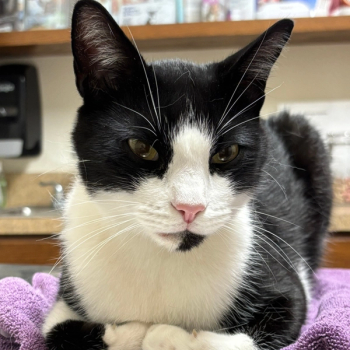
- Firstline May June 2021
- Volume 19
- Issue 03
Pediatric and geriatric anesthesia considerations
Old and young patients have unique needs when it comes to anesthesia. Understanding the pharmacodynamics of sedative, analgesic, and induction agents will improve safety and stability for all your anesthesia patients, regardless of age.
Although age is not a disease, it can be a risk factor when it comes to administering anesthesia. At the
Age and organ development
A veterinary patient is considered neonatal from birth to weaning (about age 6 to 10 weeks) and pediatric from weaning to reproductive maturity (about age 5 to 6 months). It is important to remember that neonatal and pediatric patients are not just small dogs or cats. Rather, they should be thought of as still completing development of their organ systems. Lafferty noted that during the neonatal and pediatric phases of development there is a shift from placental/maternal control of circulation and organ function to the puppy’s or kitten’s own circulatory system and organs, and as a result these young patients have unique anesthesia considerations.
Although geriatric patients have fully developed organs, the organs begin to wear out as animals age. What age we should start to worry about this varies by patient size, with small-breed dogs being considered geriatric at about age 9 years, midsize canine breeds at about age 9 to 10 years, and cats at about age 8 to 10. Although some pets may seem “young at heart,” these are the ages at which we should start to consider that either overt or occult organ system comorbidities may be present.
Physiologic considerations
Lafferty took the audience through the body system by system to discuss the various considerations when developing anesthesia protocols for these patients.
Cardiovascular function
It is important to realize that baroreceptors are not fully mature until about age 12 weeks. As a result, blood vessels in puppies and kittens are unable to vasoconstrict to maintain blood pressure, so the only driver of cardiac output is heart rate. Whereas adults can increase contractility by 300% to offset deficits, neonatal and pediatric patients can only achieve a 30% increase in contractility. Further, hypoxia drives bradycardia, which perpetuates this cycle of low blood pressure. In a practical sense, this means a greater risk for profound hypotension, bradycardia, fluid overload, congestive heart failure, and pulmonary edema. In addition to normal physiologic risk factors, an estimated 17% of puppies and 5% of kittens may have undiagnosed heart defects. For this reason, all murmurs should be evaluated before anesthesia is performed.
Geriatric patients may have similar physiologic limitations but for different reasons. Instead of a cardiovascular system that is not yet fully developed, the risk in geriatric patients is that this system will fail to compensate because it is worn out. These older patients are similarly unable to cope with hypotension because their baroreceptors may be unable to compensate to the extent necessary.
Geriatric patients also have difficulty increasing cardiac output when necessary because of fibrosis and thickening of the heart or valves and altered cardiac conduction.
Physiologic and clinical anesthesia risks in geriatric patients are identical to those in puppies and include profound hypotension, bradycardia, fluid overload, congestive heart failure, and pulmonary edema. Geriatric patients are also at increased risk for cardiac defects, although these are degenerative rather than developmental. Twenty-five percent to 33% of dogs over 9 years of age have evidence of heart disease (eg, valvular disease, dilated cardiomyopathy, arrhythmias). Cats may similarly have increased risk for hypertrophic cardiomyopathy and arrhythmias with increasing age.
Respiratory function
Young animals also have immature respiratory systems, in that their ribcage is very flexible and compliant, their intercostal muscles are weak and underdeveloped and can fatigue easily when taxed, they have an increased oxygen demand, and their chemoreceptors are less sensitive to changes in oxygen and carbon dioxide. Overall, young animals are less able to compensate when physiologic parameters require it. As a result, neonatal and pediatric patients are at greater risk for overinflation, atelectasis, respiratory fatigue, and hypoxemia. Clinically, this means we should always preoxygenate these young patients.
Geriatric patients also have similar concerns, but from weakened (atrophied) intercostal muscles, lower elasticity of lung tissue, pulmonary fibrosis, decreased elastic recoil of the lungs, decreased chest wall compliance, and decreased laryngeal and pharyngeal function. Although the reasons are slightly different, the anesthetic risks in geriatric patients are similar to those in neonates. Geriatric patients are at increased risk for atelectasis, impaired pulmonary diffusion, respiratory infections, and prolonged extubation and recovery. Just as with neonatal and pediatric patients, it is important to always preoxygenate geriatric patients.
Hepatic function
Continuing the discussion of organ system development, Lafferty said that the immature hepatic system of neonatal and pediatric patients results in low glycogen stores, decreased gluconeogenic ability, and an immature cytochrome P450 system that limits drug metabolism as well as the ongoing metabolism of endogenous products. Clinically, with regard to anesthesia considerations, patients may have normal glycemic regulation when awake but are still at risk for hypoglycemia 1 to 2 hours into anesthesia. Further, extended drug elimination times and prolonged recovery should be expected due to the immature capacity for metabolizing anesthetic and sedative agents.
Geriatric patients also have a reduced capacity to metabolize drugs due to decreased microsomal enzyme activity, decreased liver mass, and decreased hepatic blood flow. Similar to pediatric patients, risks include hypoglycemia and prolonged recovery times; additional hepatic function risks in geriatric patients include hypoproteinemia, coagulopathies, and hypothermia.
Renal function
The renal system is fully functional at approximately 3 weeks of age, so these very young patients may be at risk for prolonged recoveries or fluid overload due to decreased glomerular filtration and clearance rates, decreased reabsorption of amino acids and phosphate, and low concentrating ability. Geriatric patients are also at risk for renal insufficiency or renal disease. Clinically, geriatric patients may be less able to regulate blood pressure and more likely to have acid-base imbalances, azotemia, dehydration, and hypoproteinemia. Lafferty noted that even in normal patients, general anesthesia causes up to a 40% reduction in renal blood flow and glomerular filtration. So, caution is required in patients with the potential for renal impairment.
Clinical implications
As a result of these immature or failing organ systems, including central nervous system, gastrointestinal, or endocrine system abnormalities, we must consider accommodating the pertinent risks when performing premedication, anesthesia induction, anesthesia maintenance, sedation, analgesia, fluid therapy, and perianesthetic monitoring and patient support (ie, temperature maintenance, intubation and extubation, and recovery). A key factor in evaluating risks in any patient is a complete and thorough physical examination. Lafferty mentioned a study in which a thorough physical examination in a population of geriatric dogs identified at least 1 previously unrecognized problem in 80% of cases.1
Rebecca A. Packer, DVM, MS, DACVIM (Neurology/Neurosurgery), is an associate professor at Colorado State University College of Veterinary Medicine and Biomedical Sciences in Fort Collins. She is active in clinical and didactic training of veterinary students and residents and has developed a comparative neuro-oncology research program at Colorado State University.
Reference
1. Davies M. Geriatric screening in first opinion practice—results from 45 dogs. J Small Anim Pract. 2012;53(9):507-13. doi:10.1111/j.1748-5827.2012.01247.x
Articles in this issue
over 4 years ago
Empowered women empowering othersover 4 years ago
The medical benefits of urineover 4 years ago
So much to say, so little timeover 4 years ago
Amplifying the voice of veterinary technicians everywhereover 4 years ago
Why and how to educate your clients about One Healthover 4 years ago
Burning the candle at both endsover 4 years ago
6 ways to save time with Fear Freealmost 5 years ago
How to kick toxic practice cultures to the curbNewsletter
From exam room tips to practice management insights, get trusted veterinary news delivered straight to your inbox—subscribe to dvm360.





